A lot of athletically-minded folks out there these days are making the claim that wrapping an elastic band around your limbs can help improve various aspects of human movement. They call it compression flossing. But is this a technique that has any scientific backing, or is it just another gimmick in a seemingly infinite list of fitness fads?
As it turns out, there’s a fair amount to talk about when it comes to some of the surprising benefits this intervention has when it comes to enhancing certain aspects of mobility and even decreasing pain.
So, let’s start with the two-sentence rundown and then unpack things from there.
Compression flossing is a movement-based technique that can improve mobility, reduce pain, and even improve characteristics of muscle performance. The technique involves producing active movements while using an elastic band with mild compression around the muscles and joints being targeted.
It’s a simple, straightforward, inexpensive technique that has some promising research to back up its therapeutic effects!
So, in the name of helping you move better, feel better, and come back stronger, let’s talk about it.
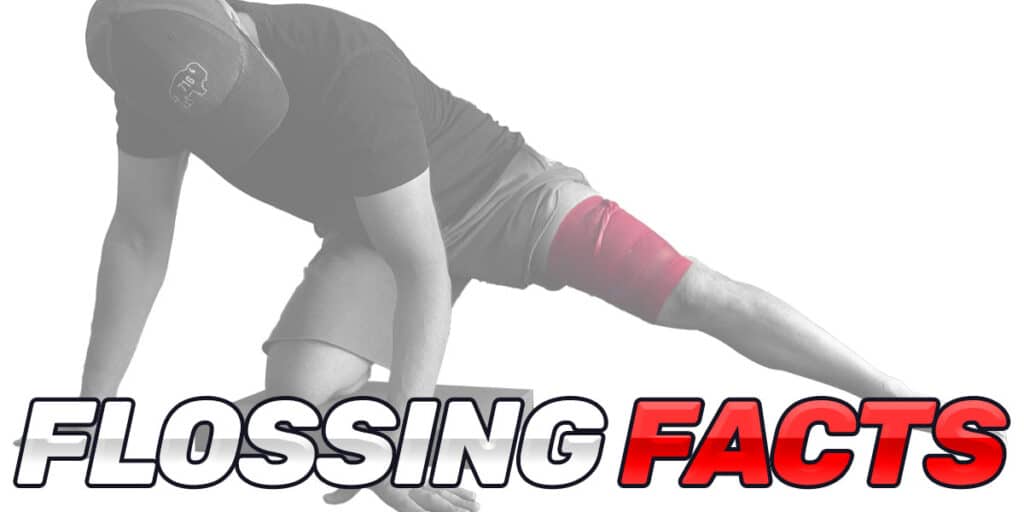
A small request: If you find this article to be helpful, or you appreciate any of the content on my site, please consider sharing it on social media and with your friends to help spread the word—it’s truly appreciated!
The science of compression flossing

Compression flossing is a pretty cool technique that can offer some surprising benefits for the right individuals. It’s gained some notable popularity over the past decade or so, and what’s cool is that there’s been enough research on this intervention to draw a few conclusions about its benefits.
So, as we go along, I’ll be referencing the findings from a 2021 systematic review, so click the link if you want to read the details. While there’s certainly more research to talk about, for brevity’s sake, I’ll be recapping some of the findings from this one particular article.
FYI: This technique sometimes goes by a few other names, such as tissue flossing, voodoo flossing, or the tack and floss method.
Get the FREE PDF handout
As we unpack these findings and talk about how to utilize this little intervention, I’ll quickly mention that I’ve created a FREE PDF covering the basics of how to perform tissue flossing, so click the preceding link if you want to have a digital copy or hard copy you can keep by your side and access as needed.
What does compression flossing achieve?
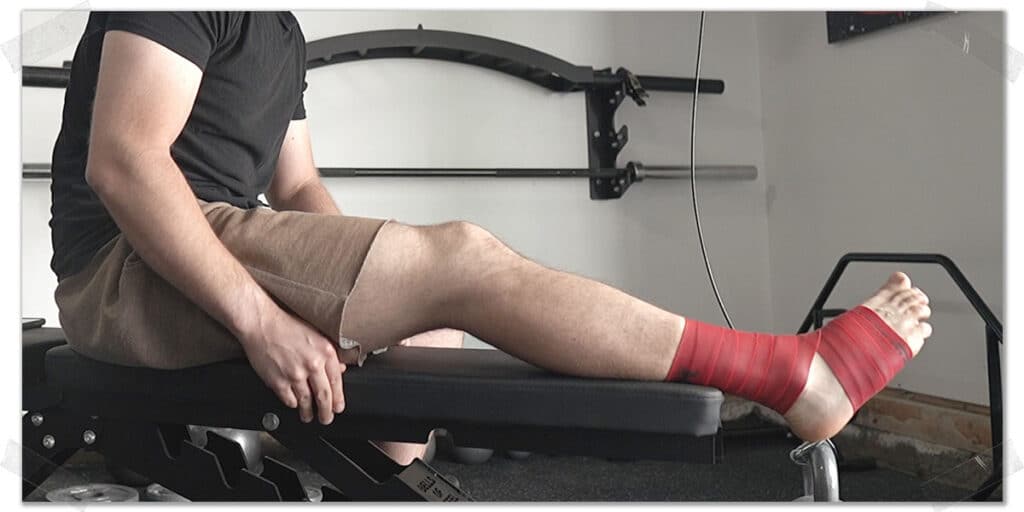
When it comes to compression flossing, the name of the game is predominately about improving tissue quality in your muscles and tendons, as optimal quality leads to optimal and healthy movement.
One particular type of tissue that compression flossing seems to highly influence is the fascia (also known as myofascia), which wraps around muscles like a Saran Wrap film.
These various soft tissues are prone to experiencing various dysfunctions as we push ourselves within our sports and physical activities. They also are prone to these same annoying issues as we age.
Either way, the result of these dysfunctions tends to be:
- Reduced mobility
- Stiffness
- Aches and pains
In other words, suboptimal tissue quality can just make our muscles, tendons, and the movements they produce feel lousy and gunky. Naturally, these impaired characteristics and qualities can hold folks back from producing optimal movement, predispose them to injury, and lead to annoying aches and pains.
When looking at the effects of compression flossing, the most prominent benefit it offers seems to be improvements in tissue mobility. However, it also seems to offer improvements to fluid dynamics, and if this technique is performed with the floss band wrapped around a joint, it can theoretically help optimize joint mechanics.
By pinning down the muscles and forcing them to slide and move against this compression, it’s believed that a shearing force is taking place within the tissues, which breaks up some of the restrictions that can impair the movement quality of our muscles. In particular, flossing seems to be very effective at mobilizing the fascia, which can become “sticky” and not only impair movement but also lead to myofascial pain.
Related article: Tight Calves? Try Barbell Tempering (It’s Intense & It Works!)
As for the joints, the theory is that compression around the joint itself can help optimize movement between joint surfaces a bit better, which, again, can improve biomechanics and mobility of the targeted area. This one’s a bit more theoretical, but when it comes to areas such as the ankle, which is packed with a ton of superficial joints, the concept makes sense, but I haven’t come across any studies that have really validated this.
There is also some evidence to show that compression flossing can help reduce pain and even optimize certain aspects of physical performance, but keep in mind that this isn’t a slam dunk and that there’s certainly a need for more research to really further substantiate some of these findings.
Contraindications for compression flossing
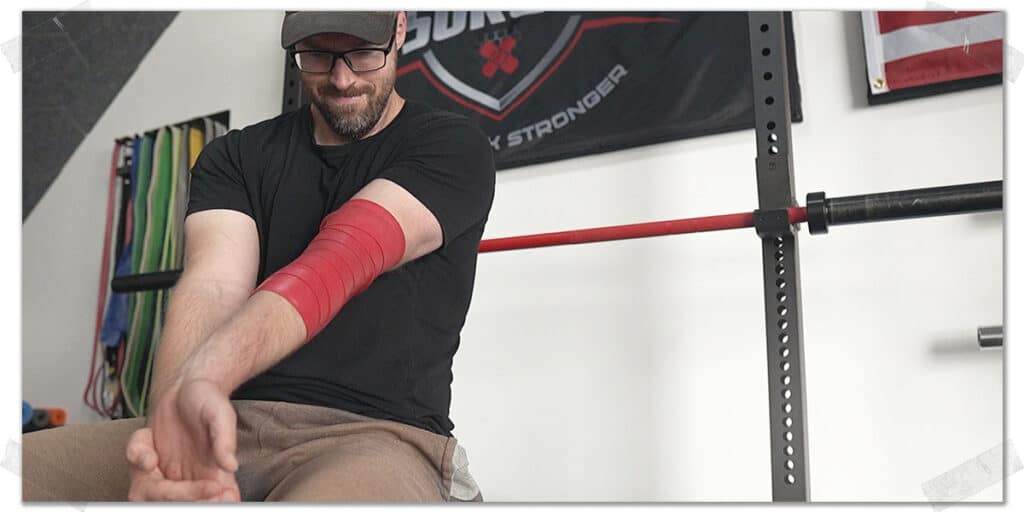
It needs to be said that this technique is not for everyone, as certain populations are better off foregoing it and performing a different intervention instead. It’s an inherently safe technique for those who are otherwise healthy, but there are a few populations who will likely need to forego compression flossing. This includes:
- Individuals who are allergic to latex (you may still be able to perform this technique if you can find a latex-free band).
- Those who have blood clotting issues.
- Individuals with arterial or venous insufficiency (a condition where your blood has difficulty getting into or out of your extremities, respectively).
Please check with a qualified healthcare professional if you have any questions about these conditions or any other health issues you may have.
Keep in mind there are plenty of other ways you can improve your tissue and joint mobility without utilizing flossing bands.
“When looking at the effects of compression flossing, the most prominent benefit it offers seems to be improvements in tissue mobility.”
Remember: There’s no point in trying to improve your mobility if you’re compromising your safety or well-being in the process.
How to: Compression flossing for the extremities
The compression flossing technique itself is rather straightforward to perform, which is one of the many reasons why it can be such a solid self-mobilization technique to integrate into your health and movement pursuits.
Here’s the rundown of the process:
- Start by wrapping the band around your extremity once or twice without any tension to anchor it down, then stretch the band to about 50% of its capacity and wrap the band over the target area while maintaining this tension.
- Once you’ve wrapped the area you’re looking to target, just tuck the loose end under one of the previous loops to secure it in place.
- When you’ve done this, the area that has been wrapped should feel snug with mild compression but nothing that is extreme or uncomfortable. If it doesn’t feel comfortable, undo it and try again with a bit less tension or a slightly different placement of the band.
One important point to mention here is to always wrap upwards, meaning you start further away and finish closer toward your torso.
The easy way to remember this is to “wrap toward your heart”. The reason for wrapping in this direction is to make life easier on the one-way valves within your veins; wrapping in the opposite direction pushes the blood in the wrong direction, which is something you want to avoid.
“There is also some evidence to show that compression flossing can help reduce pain and even optimize certain aspects of physical performance.”
Who should perform compression flossing?
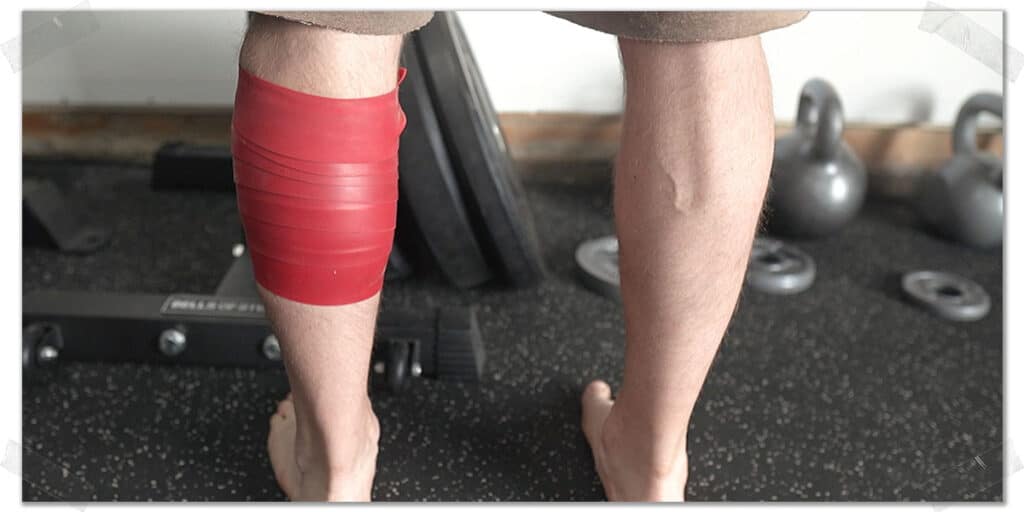
Flossing your muscles and joints works best for active individuals who are looking to ensure they keep their mobility and performance in top-notch shape and for those who feel that movement in their limbs or around their joints (knees, elbows, wrists, ankles) is a bit stiff or gunky.
It can also, under the right circumstances, be used to help restore mobility in later stages of injury recovery for specific types of injuries, but definitely check with a healthcare provider if you want to use this as an injury-recovery intervention.
Remember: there are plenty of additional ways to work on your mobility and clean up your soft tissue health; flossing, like any other tool, certainly has a time and place but isn’t the only way to get the job done.
The beauty of the compression flossing technique that sets it apart from other self-mobilization techniques is that its mechanism of action seems to be unique to other soft tissue techniques such as foam rolling and stretching (which are not bad interventions in their own right, just to be clear).
“50% tension on the band is the recommendation, which should feel like a mild compression but quite tolerable for a few minutes.”
The best movements for compression flossing
As for what to specifically do once the band is wrapped up, you simply move the limb through as large of a range of motions as you reasonably can.
The movements can be any that you’d like. You’re simply looking for movements that allow you to feel a stretch or subtle tension occurring underneath the band.
Once you find a movement that provides this sensation, simply perform it repeatedly for a few moments, along with any other movements that provide the same sensation.
Pro tip: movements that target the joints above and below the site of compression should be used in addition to any single-joint movements. This is to ensure that you’re stimulating and challenging as much of the soft tissue as possible.
Numerous muscles and subsequent tendons cross two joints, so by performing these types of compound, multi-joint movements, you’re ensuring maximal stimulation to these tissues.
Related article: Improve Your Upper Back Health With The Peanut Technique | Very Simple
As a personal example: On days when I’m not working out, I tend to perform simple movements, while on workout days, I often perform a simple movement or two and also like to perform movement patterns of some of the resistance exercises I’m about to perform.
It sometimes feels a bit awkward or unusual to move your extremity around with the band all wrapped up, especially if it’s crossing over a joint, but, again, it should never be painful.
How long to wear a compression band
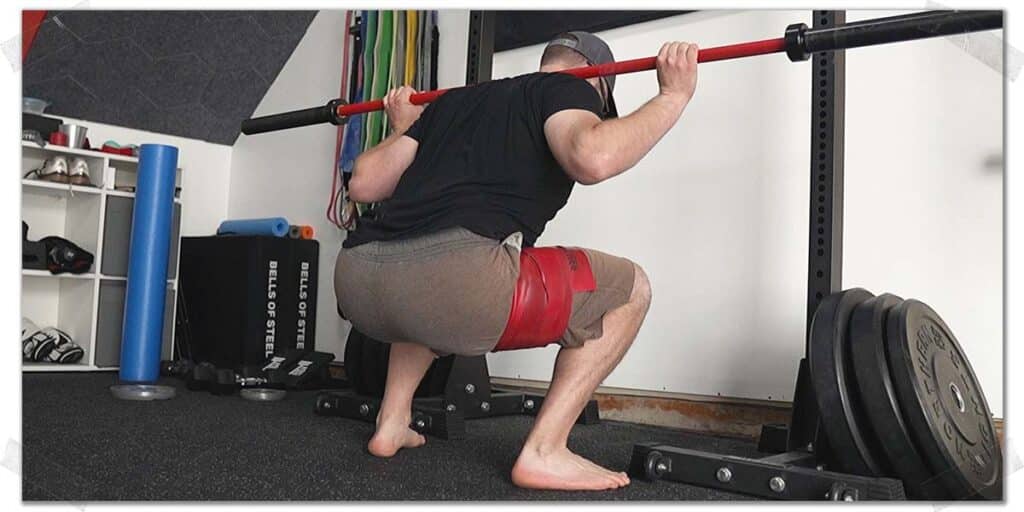
As a general rule, you’ll want to keep the band on for only a couple of minutes. Chances are that if you keep the band on for longer than this, it will become rather uncomfortable, and leaving it on for an excessively long time will do more harm than good.
As another general rule, the tighter you wrap the band, the sooner you’ll want to take it off.
Again, a 50% tension on the band is the recommendation, which should feel like a mild compression but quite tolerable for a few minutes.
How often to perform compression flossing
You can perform this technique as often as you want, though there’s probably no need to perform it multiple times daily.
For most people, the technique is appropriate to do as part of a warmup or cool-down series before or after a workout session, either for one or multiple areas of the body, though you can also perform your flossing on days when you’re not working out.
Flossing a specific body part a handful of times per week is likely ideal. Still, everyone’s needs will likely be different, so there will likely be some experimentation and fine-tuning on your end to determine your ideal frequency should you give this flossing technique a try.
Related article: Spanish Squat For Healthier Knees | Why | How | Best Practices
When will you see benefits?
As with most other interventions, if you want to see or feel benefits take place, it’s worth remembering that it’s all about consistency. A technique such as this typically needs to be performed repeatedly and at consistent intervals throughout the week to help bring about any benefits that may take place.
In that regard, you’ll likely need to stick with it on a consistent basis for a handful of weeks before you start perceiving any lasting benefits to your mobility or decreases in stiffness or soreness. It could be that you’ll feel some positive effects sooner than this, but as a general rule, stick with it for at least four weeks.
Final thoughts
Now, if you thought the topics in this article were interesting or helpful, you’ll want to check out this article right here, which will also cover another topic that you’ll find interesting or helpful as well (it will walk you through a powerful, mobility-enhancing technique known as body tempering).
And in the meantime, keep making great things happen!

Hi! I’m Jim Wittstrom, PT, DPT, CSCS, Pn1.
I am a physical therapist who is passionate about all things pertaining to strength & conditioning, human movement, injury prevention and rehabilitation. I created StrengthResurgence.com in order to help others become stronger and healthier. I also love helping aspiring students and therapists fulfill their dreams of becoming successful in school and within their clinical PT practice. Thanks for checking out my site!

